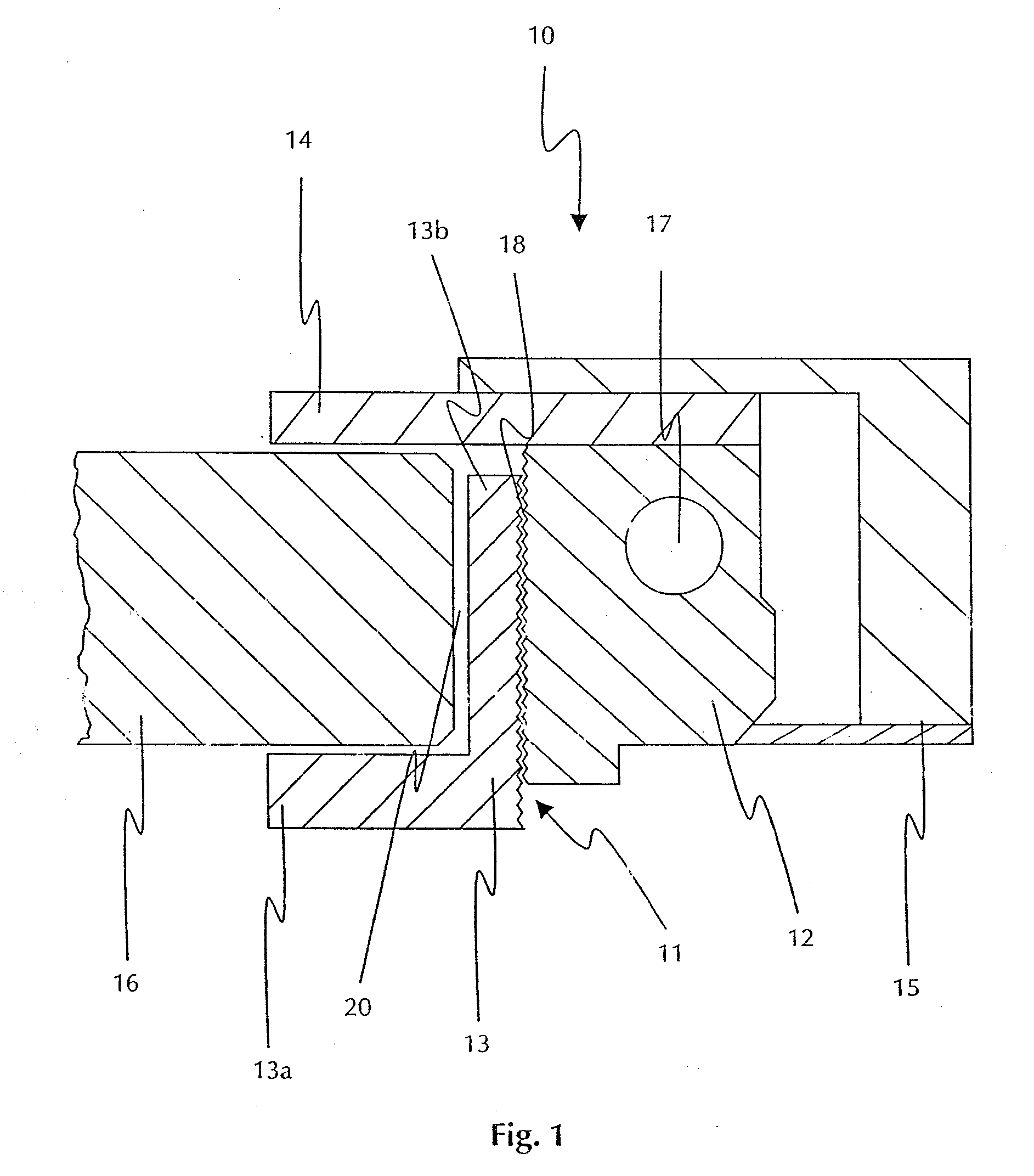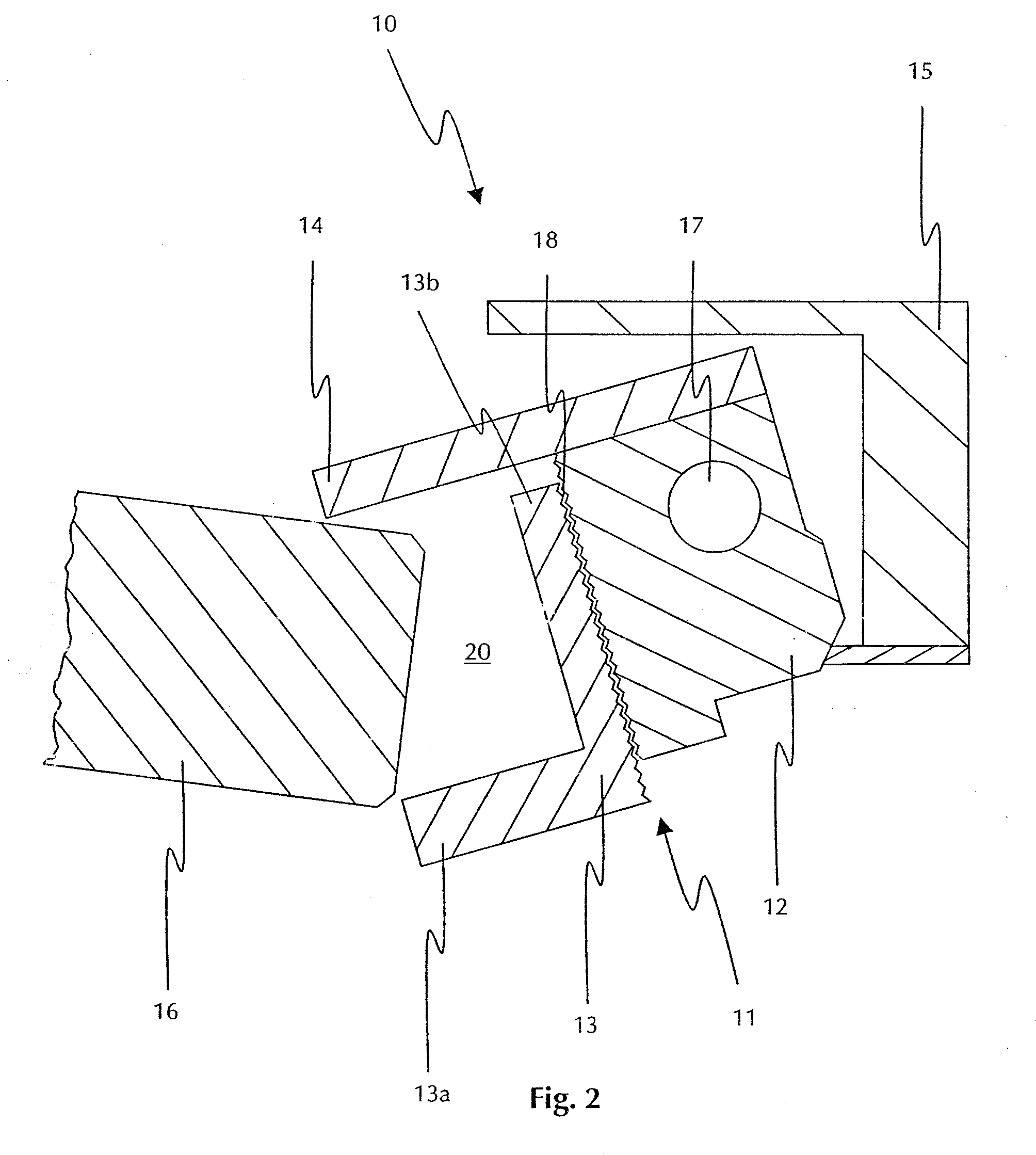Electric door opener for glass doors
- Summary
- Abstract
- Description
- Claims
- Application Information
AI Technical Summary
Benefits of technology
Problems solved by technology
Method used
Image
Examples
Embodiment Construction
[0028]FIG. 1 shows a sectional view of a door opener 10 for glass doors. The door opener 10 is in the closed position. The door opener latch 11 is pivotably held on a pivoting axle 17. The door opener 10 comprises a door opener housing 15 in which the latch 11 is arranged. The door opener latch 11 consists of a latch body 12 and an L-shaped holder 13 whose one arm 13a of the L forms the one leg of the U of the U-shaped receiving region 20 and whose other arm 13 of the L acts as a bearing surface and rests on the latch body 12. The contact surfaces of the arm 13b and the latch body 12 which rest on each other are arranged as a tooth grid 18. The holder 13 can be adjusted along the tooth grid 18, with the distance between two teeth predetermining the length of one adjustment step each.
[0029]The U-shaped receiving region 20 is also delimited by the arm 13b and the mating holder 14 in addition to the arm 13a of holder 13, with the mating holder 14 and the arm 13a forming the legs of the...
PUM
 Login to View More
Login to View More Abstract
Description
Claims
Application Information
 Login to View More
Login to View More - R&D
- Intellectual Property
- Life Sciences
- Materials
- Tech Scout
- Unparalleled Data Quality
- Higher Quality Content
- 60% Fewer Hallucinations
Browse by: Latest US Patents, China's latest patents, Technical Efficacy Thesaurus, Application Domain, Technology Topic, Popular Technical Reports.
© 2025 PatSnap. All rights reserved.Legal|Privacy policy|Modern Slavery Act Transparency Statement|Sitemap|About US| Contact US: help@patsnap.com



